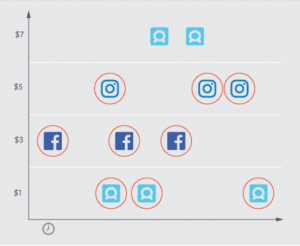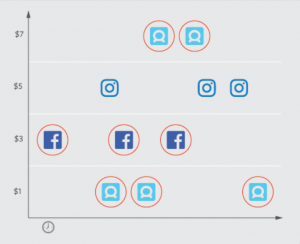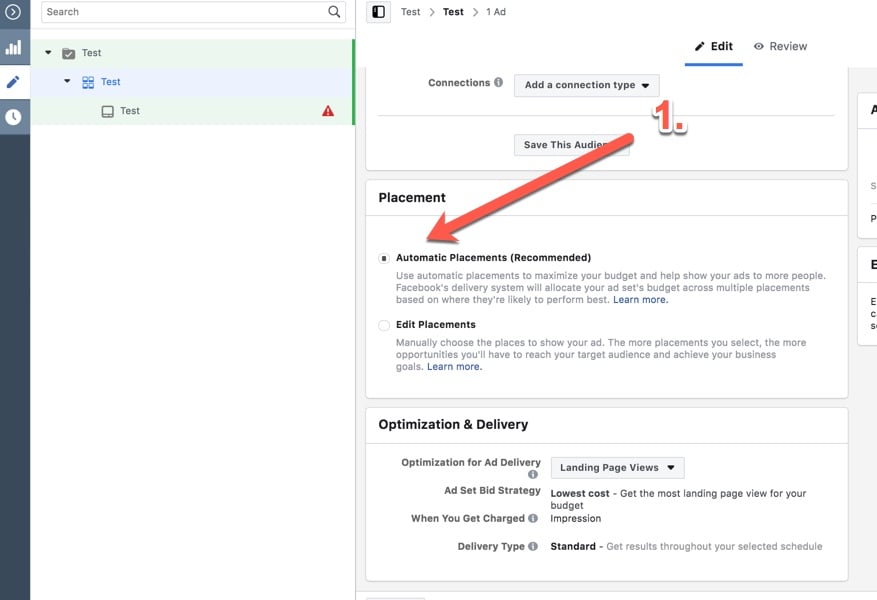Maximize Your Facebook Ads ROI with Automatic Placements
Facebook gives advertisers many possibilities to optimize and improve performance. It can be overwhelming at times, once you start thinking about the myriad of factors like campaign objective, targeting, ad delivery, ad unit type, ad copy, and budget—to name a few. There are a lot of considerations when advertising on Facebook, which is why advertisers are always looking for ways to improve performance and efficiency for their campaigns.
Facebook has slowly made adjustments to its ad platform to help advertisers improve their results much faster. The development that stands out the most is maximizing “placement” performance with automatic placements.
Facebook has established automatic placements in an effort to help advertisers get the best results available across all default placements. This allows Facebook to choose results from the broadest range possible, which implies that automatic placements are typically the most efficient use of the advertiser’s budget because they help control costs.
Do Advertisers Need to use Facebook Automatic Placements to Improve ROI?
The short answer, yes.
In past years it was wise to break out your ad sets individually for each placement, to have more control and easily decrease or increase ad spend based on results. However, Facebook’s ad technology has gotten to the point where it will likely negatively impact performance in most cases if you use the same tactic and not have all placements enabled in one ad set.
Let’s explore why.
Facebook always has the advertiser’s best interest in mind when it comes to delivering results. The automatic placement option will optimize your ads in real-time to get your ad unit in front of users who are more likely to take action based on the campaign objective.
Facebook had shared in the past a fantastic explanation and visual of how automatic placements work and why it’s so powerful. It’s easy to digest and understand, no matter your advertising skill level.


Facebook’s example graphic above presents 11 opportunities to show an ad: three on Facebook, three on Instagram, and five on Audience Network. For reference, in the past, those three placements would have been broken into three separate ad sets.
The red circle around any of these icons (placements) means the ad was shown in that placement and got the optimization event.
When selecting all three placements and letting Facebook optimize dynamically, your report would highlight that Facebook placements have an average cost per optimization event of $3, Instagram placements have an average cost per optimization event of $5, and Audience Network placements have an average cost per optimization event of $1. If your budget were $27, you’d get nine total optimization events at an average cost of $3 each.
The first instinct of a digital marketer would be to turn off the Instagram placement due to the higher cost to focus on the lower-cost Facebook and Audience Network placements. If that happened, then the below graphic highlights the new outcome.


The majority of the placements would still deliver the same result, but eliminating Instagram would drive up the average cost per optimization event of Audience Network placements from $1 to $3.40. The increased cost without Instagram placement is due to less audience inventory. The more placements enabled, the more inventory and less competition amongst advertisers. Instead of nine total optimization events, you’d only receive eight optimization events for your $27 budget due to the higher overall cost.
Not all placements are created equal in performance, but trying to outsmart the Facebook Algorithm can lead to underperforming results.
What are the Different Types of Facebook Placements?
There are currently a total of 14 placements to run ads, and we anticipate that number to grow as Facebook expands to more of their network of apps (we expect to see What’s App appear as a placement soon).
Below is a complete list of the placements currently available.
Feeds
- Facebook Feed
- Instagram Feed
- Facebook Marketplace
- Facebook Suggested Videos
- Facebook Right Column
Stories
- Facebook Stories
- Instagram Stories
- Messenger Stories
In-Stream
- Facebook In-Stream Videos
Inbox and Messages
- Messenger Inboxes
- Messenger Sponsored Messages
Contextual Spaces
- Facebook Instant Articles
More Apps and Sites
- Audience Network Native, Banner, and Interstitial
- Audience Network Rewarded Videos
- Audience Network In-Stream Videos
How to Enable All Placements
As you can see, Facebook offers a lot of placements to run your ads, and it can be overwhelming. That’s why automatic placements are beneficial; you can let Facebook do all of the heavy lifting and optimize for the lowest cost.
Below are instructions on how to turn on automatic placements on Facebook.
- Go to your Facebook Ads Manager to create a new campaign or edit an existing one. Be sure you’ve selected the Ad Sets tab (1) and then select the ad set you want to edit (2).


- Once your ad set is open, scroll down until you reach the Placement section. Be sure the “Automatic Placements” box (1) is selected.


And that’s it!
Enabling the automatic placement feature is the easy part. Understanding how automatic placements work and why they are beneficial to your overall advertising strategy empowers you as an advertiser to maximize your ROI and drive the best results for your campaigns.
The post Maximize Your Facebook Ads ROI with Automatic Placements appeared first on Portent.





